You’re at a crossroads in life, seeking deeper meaning and purpose. Perhaps recent challenges have caused you to question your beliefs and values. Or you’ve always felt drawn to spirituality but needed to figure out where to begin exploring.
Whatever brought you here, the good news is countless paths can nourish your spiritual journey. While “spirituality” means different things to different people, at its core, it’s about the pursuit of meaning, transcendence, inner peace, and connection to self, others, and the divine.
The goal of this guide is to help orient you if you are seeking a deeper spiritual practice but need help figuring out where to start. Here, we will overview six major spiritual traditions to help you survey the landscape. We’ll summarize each path’s core teachings, practices, and communities. Most importantly, we’ll offer suggestions for choosing your spiritual journey with an open mind and heart.
Table of Contents
Spirituality provides a compass to navigate life’s big questions: Who am I? Why am I here? How should I live? It invites you to look within, know yourself more deeply, and align your outer life with your inner truth.

While spirituality is deeply personal, you needn’t walk the path alone. Most spiritual traditions offer guidance through teachings, practices, rituals, and community support. Your task is to survey the terrain, listen to your inner wisdom, and choose the path(s) most inspiring to you.
The Benefits of Exploring Multiple Spiritual Paths
Exploring a variety of spiritual traditions with an open mind and heart has many benefits:
- You can sample different teachings and practices to discern what resonates most with your values and personality.
- It prevents you from becoming rigidly attached to any single doctrine. You take what serves you and leave the rest (respectfully).
- You develop a broader, more compassionate worldview by understanding diverse perspectives.
- It allows you to evolve organically – spiritually, as you grow and change.
- You realize the shared essence behind all great wisdom traditions and human spirituality.
Approaching your spiritual journey with curiosity, discernment, and direct experience will lead to self-knowledge, wisdom, and inner peace.
Six Major Spiritual Traditions
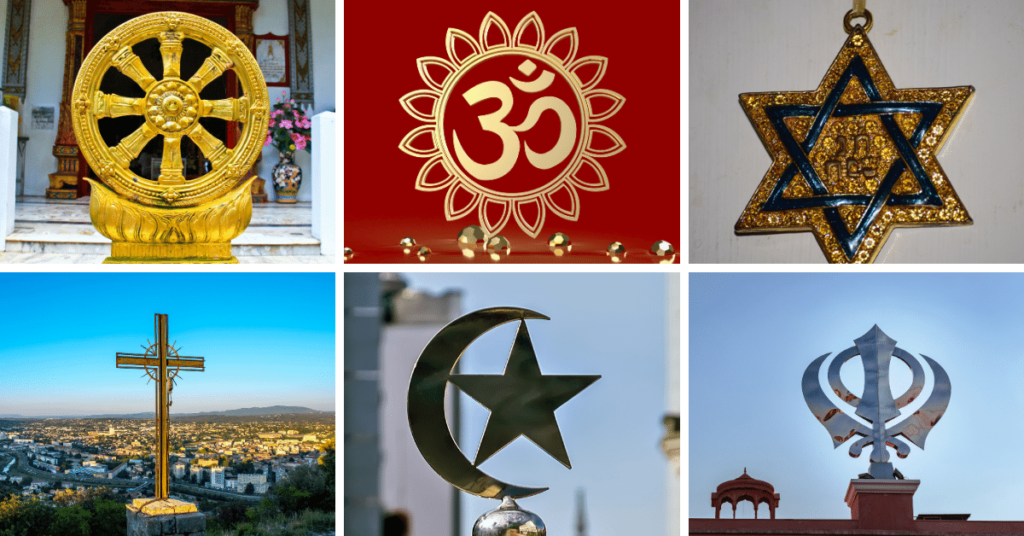
Here’s an overview of six major spiritual traditions to help you get oriented. Keep an open mind and heart. Pay attention to what resonates and what doesn’t. Be wary of blind adherence to dogma. Discern the true essence from the trappings. What matters most is that your path nurtures your spirit.
Buddhism: The Path of Mindfulness and Compassion
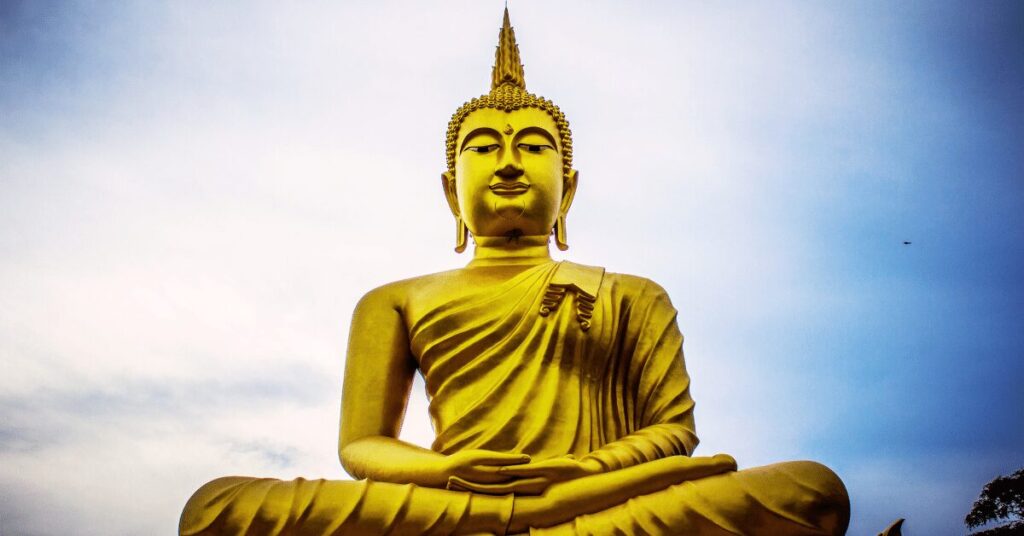
Buddhism focuses on spiritual liberation from suffering. Its key insights arose from the experiences and teachings of Siddhartha Gautama, an Indian prince who renounced his privileged life to seek understanding. After years of spiritual practice and meditation, he achieved Enlightenment and became known as the Buddha or “awakened one.”
Core Buddhist Teachings
- Life is characterized by dukkha – a Sanskrit term meaning suffering, dissatisfaction, or impermanence. Even our happiest states are fleeting.
- The cause of suffering is tanha – craving, attachment, or desire. We suffer when we cling to what is impermanent.
- There is a path out of suffering. We can be liberated by living an ethical life, practicing mindfulness, and cultivating wisdom.
- The Noble Eightfold Path provides guidelines for moral conduct, meditation, and insight to achieve liberation from suffering.
- There is no eternal self or soul. The notion of an unchanging, fixed self is an illusion.
- Life is an endless cycle: birth, death, and rebirth, driven by karmic forces. Our actions determine our future circumstances.
- All phenomena are intrinsically empty of independent identity or essence. Things only exist in relationship to other phenomena.
Mindfulness Meditation
A key practice in Buddhism is mindfulness meditation – This involves focusing awareness on the present moment with an attitude of openness and non-judgment. By cultivating mindful attention to our body, thoughts, and environment, we gain insight into the nature of reality and our habitual patterns of thinking and behaving. This allows us to respond to life’s challenges with wisdom and compassion rather than reacting unconsciously.
Branches of Buddhism
Over centuries, Buddhism has evolved into different strands. The two largest are:
- Theravada Buddhism:
- Emphasizes monastic life, studying Buddhist scriptures, and the path to individual liberation.
- Most influential in Sri Lanka, Thailand, Myanmar, and Cambodia.
- Mahayana Buddhism:
- In addition to individual liberation, it focuses on the bodhisattva path of compassionately helping others end suffering.
- Dominant in China, Japan, Korea, and Vietnam.
- Includes Zen and Tibetan Buddhism.
Whether following the forest meditation tradition of Thailand, the Zen ceremonies of Japan, or the intricate visualizations of Tibetan Vajrayana, Buddhism offers various portals to awaken our minds and develop wisdom and compassion.
Hinduism: The Path of Self-Realization
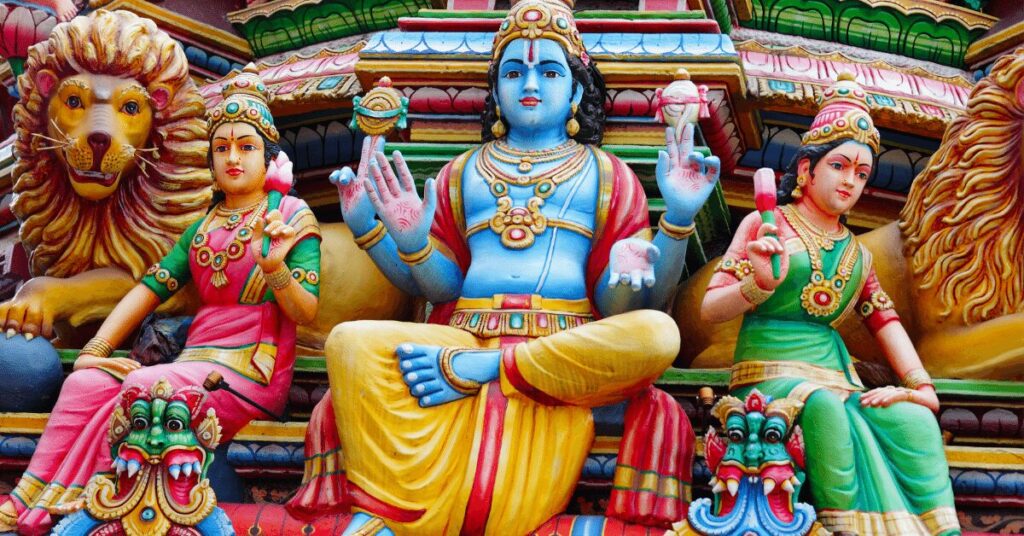
Hinduism is the ancient religion of India that emphasizes spiritual practice as a means to self-realization and breaking free from the cycle of rebirth governed by karmic law.
Core Hindu Beliefs
- Brahman is the eternal, all-pervading Divine Ground from which all existence originates and to which it returns.
- There is a Divine Cosmic Spirit that manifests in everything. The same divinity resides within all beings.
- The self or atman is our eternal essence, one with Brahman. The goal is to realize this divine oneness by seeing through the illusion of separateness.
- Karma and samsara – The cycle of action, reaction, and the wheel of birth and rebirth continue until spiritual liberation is achieved.
- Dharma – Personal spiritual and social duty according to the universe’s laws.
- Moksha – Spiritual liberation from the cycle of birth and death.
- Paths to Enlightenment The rich Hindu tradition offers diverse approaches to spiritual practice:
- Jnana Yoga – The path of wisdom, introspection, and self-inquiry.
- Karma Yoga – The path of selfless service to humanity as a spiritual practice.
- Bhakti Yoga – The path of devotion focused on love for and surrender to a Divine incarnation such as Krishna or Shiva.
- Raja Yoga – The royal or eight-limbed path outlined by Patanjali involves moral conduct, posture, breath control, and meditation.
While the path varies, the goal of Enlightenment remains central. Through persistent practice, one achieves moksha – liberation from the cycle of death and rebirth to realize the eternal, divine nature of the self.
Judaism: The Path of Sacred Heritage

Judaism is the ancient monotheistic religion of the Jewish people. Central to Judaism is the covenant between God and Abraham regarding the Promised Land and the belief that the Jews are God’s chosen people.
Core Jewish Beliefs
- There is one God who established a covenant with Abraham to worship only Him and inhabit the promised land.
- God gave Moses the Torah – the first five books of the Bible containing God’s commands and law.
- God will send a Messiah to restore Israel and usher in a new era of global peace.
- The human soul is pure at birth. We have free choice whether to do good or evil.
- The righteous will be rewarded, and the wicked will be punished in the world to come.
- The spiritual mission of the Jews is to be a light unto the nations through observance of the Torah.
- Jewish identity is inherited through one’s mother or formal conversion.
Practices and Community
For millennia, Judaism has sustained its identity through sacred rites and customs:
- Brit Milah – Circumcision of newborn males as a sign of the covenant.
- Bar and Bat Mitzvah – Coming-of-age rituals for boys and girls.
- Keeping Kosher – Eating food that conforms to Jewish dietary laws.
- Shabbat – The Sabbath observed from sundown Friday to nightfall Saturday.
- Holidays – Rosh Hashanah, Yom Kippur, Passover, etc.
- Life Cycle events – Weddings, funerals, rituals surrounding birth and death.
Being part of a Jewish community and family encourages ongoing spiritual growth and connects one to thousands of years of ancestry. While reform movements have modernized aspects of practice, Judaism’s essence remains grounded in its sacred heritage.
Christianity: The Path of Salvation through Christ
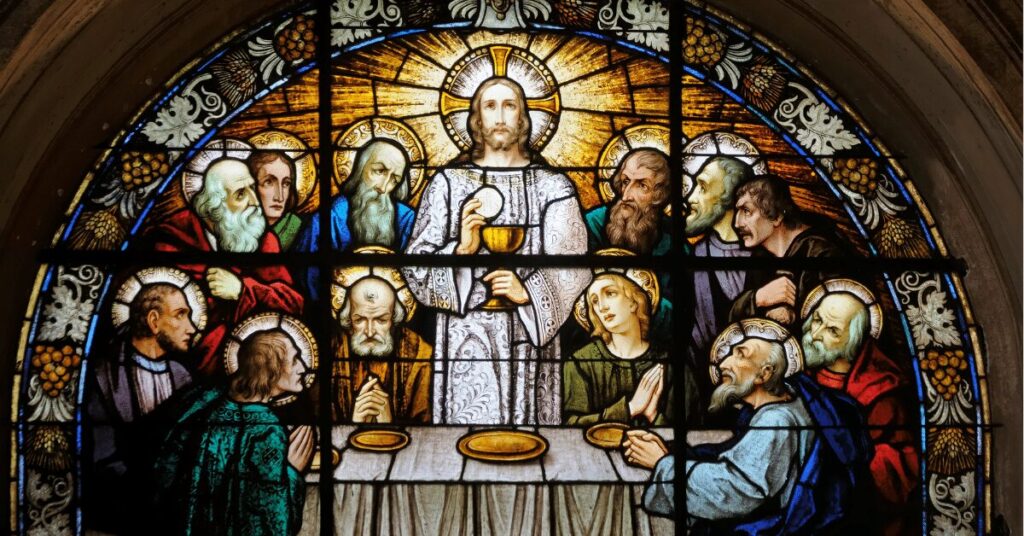
Christianity is the world’s largest religion, with over 2 billion adherents. It originated two millennia ago as a Jewish sect based on the life and teachings of Jesus Christ.
Core Christian Beliefs:
- There is one God who created the universe and takes a personal interest in human affairs.
- Jesus Christ is the Son of God, and the Messiah promised in the Old Testament.
- God sent Jesus to redeem humanity from sin through his death and resurrection.
- Faith in Jesus is the only pathway to salvation and eternal life.
- The Bible is the inspired Word of God revealed through prophets and apostles.
- Those who repent their sins and accept Jesus as Lord will be resurrected to dwell forever in God’s presence.
Practices and Community
Christian spirituality is nurtured through:
- Prayer – Personal and communal prayer to God through Jesus Christ.
- Worship – Congregational worship services focusing on Bible readings, singing, and teaching.
- Acts of Service – Participation in mission trips, social justice initiatives, charities, etc.
- Rituals – Baptism, communion, weddings, funerals.
- Holidays – Christmas, Easter, Advent, Lent, etc.
- Fellowship – Gathering in small groups and participating in church community life.
While theological differences have produced numerous denominations, Christians are unified by faith in Christ and sharing the gospel. Compassionate service to the poor and marginalized is also emphasized for spiritual growth.
Islam: The Path of Submission to Allah
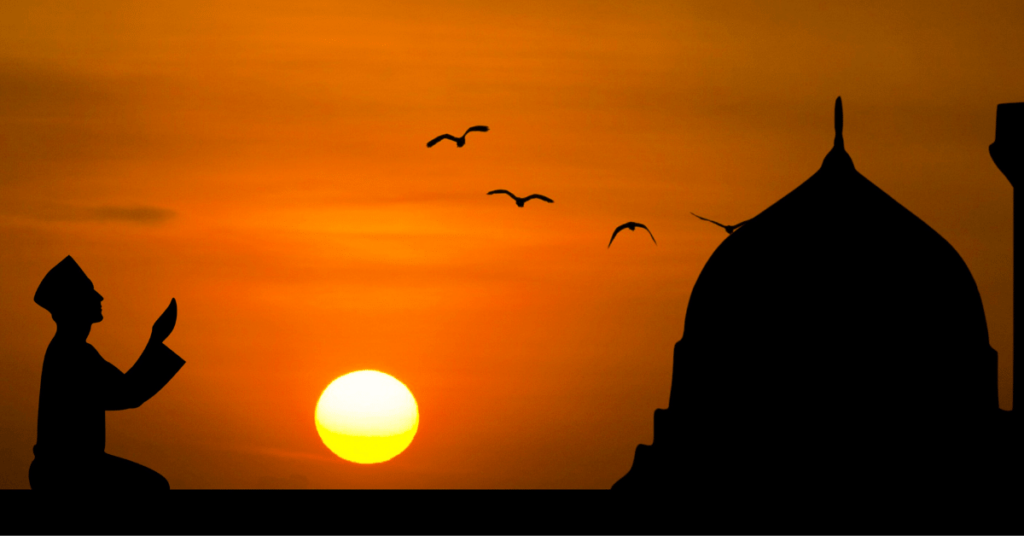
Islam was founded in the early 7th century based on revelations received by the prophet Muhammad. Today, it has over 1.8 billion adherents globally. Islam means “submission to the will of God.” Central to Islam are the Quran as the literal word of God and the example of Muhammad.
Core Islamic Beliefs
- There is only one God, called Allah, in Arabic. He is eternal, all-powerful, and controls human destiny.
- Muhammad is God’s greatest and final prophet, sent to reveal His will for humanity.
- A day of judgment is coming when all souls will be held accountable for their actions and assigned to eternal paradise or hell.
- All life should be lived in humble submission to Allah and His will.
- The 5 Pillars provide the framework for Muslims to fulfill their religious duties:
- Shahada is a public proclamation of faith in one God and Muhammad as His messenger.
- Salat – Praying five times daily facing Mecca.
- Zakat – Donating annually to charity.
- Sawm – Fasting during daylight in the month of Ramadan.
- Hajj – Pilgrimage to Mecca once in a lifetime if able.
While splintered into sects, Muslims worldwide are united by rituals, praying in mosques, avoiding alcohol and pork, practicing modesty, and making pilgrimage to Islam’s holy sites.
Sikhism: The Path of Devotion and Justice

Sikhism originated in Punjab, India, in the 15th century CE under the leadership of Guru Nanak. As a synthesis of Hindu and Islamic influence, Sikhism emphasizes devotion to one God, the guru’s teachings, and social justice.
Core Sikh Beliefs:
- There is one universal Creator God that manifests in all creation.
- All human beings can realize the divine within them without priests or rituals.
- The goal of life is overcoming the ego to reunite the soul with God through virtuous living.
- Men and women are equals, and service to humanity is the highest pursuit.
- Upholding justice and protecting the oppressed is one’s spiritual duty.
Spiritual Practices
- Naming ceremony soon after birth.
- Amrit baptismal ceremony initiates one into the Khalsa brotherhood.
- Chanting gurbani hymns from the Sikh scripture, Guru Granth Sahib.
- Seva – Volunteering in selfless service without regard to one’s religion.
- Kirat karo – Earning an honest living without exploiting others.
- Vand chhakna – Sharing one’s wealth and resources with others.
- Meditating on God’s name as the path to Enlightenment.
Sikhs wear the five articles of faith to reflect their commitment – uncut hair, a comb, a steel bracelet, underwear, and a sword. Emphasis is placed on the equality of all people united as one human family.
Finding Your Unique Spiritual Path

While this overview covers the major Eastern and Western spiritual traditions, infinite pathways exist. Some seekers craft an eclectic personal practice combining elements from different faiths. Others pursue a non-theistic spirituality in nature, art, music, and humanity’s common yearning for meaning and purpose.
The key is realizing there are many routes up the mountain to appreciate the view from the summit. Your task is choosing the path most resonates with your values, personality, and life circumstances.
Here are suggestions for mapping your spiritual journey:

- Reflect on your beliefs, values, and worldview. What gives your life meaning? Do certain traditions already appeal to you?
- Read spiritual classics and writings from sages in various traditions. Let their wisdom inspire and inform you.
- Talk to friends about their spiritual practices. Ask what works and why.
- Attend religious services and meditation groups to experience techniques firsthand.
- Focus more on direct experience than abstract philosophizing. Your path should transform you from the inside.
- Listen to your intuition. Pay attention to your energy levels. Do certain practices uplift you while others deplete you?
- Consider working with a spiritual mentor or teacher experienced in the path(s) you’re exploring. Their guidance can be invaluable.
- Your spiritual growth is a lifelong process. Refrain from cling tightly to one approach. Allow your practice to evolve organically as you do.
Above all, walk the path with sincerity, devotion, and an open heart. Draw upon the world’s sacred wisdom, but realize truth ultimately springs from within. As the Buddha said, “Be a lamp unto yourself.”
Continuing Your Spiritual Journey

Finding your spiritual path is a journey of exploration and discovery. Here are some suggested next steps:
- Set aside regular time for spiritual practices like meditation, prayer, or nature walks.
- Find communities and friends who share your spiritual interests. Join a temple, ashram, mosque, or church.
- Read books from spiritual teachers across different traditions to broaden your understanding.
- Keep a spiritual journal to reflect on insights, experiences, and changes.
- Don’t be afraid to question and change paths as your journey unfolds. Growth often requires leaving comfort zones.
- Consider working with a spiritual mentor or guide to help you stay aligned and address challenges.
- Above all, approach your spiritual journey with patience, curiosity, and an open heart.
May your spiritual journey lead you to self-realization, wisdom, and compassion. Live from your deepest truths. The purpose of the path is not just to reach the destination but to walk with presence, purpose, and joy.
Live Your Life & Love It!!
Another Article You May Like: Decoding Human Energy and Vibrational Frequencies: A Spiritual Exploration
FAQs
What is a spiritual path?
A spiritual path provides guidance for living a meaningful, ethical life, often through teachings, practices, community support, and connection with the divine.
What are the different types of spiritual paths?
The main types of spiritual paths include Buddhism, Hinduism, Judaism, Christianity, Islam, and Sikhism. There are also many personal, non-religious spiritual paths.
How can I explore spirituality?
You can explore spirituality by reading books, talking to friends, attending religious services, meditating, spending time in nature, and listening to your inner wisdom.
How is spirituality different from religion?
Spirituality focuses on personal growth and living your values. Religion is an organized system of beliefs, rituals, and sacred texts.
How can I start my spiritual journey?
You can start your spiritual journey by reflecting on your beliefs, trying different practices like prayer or meditation, reading spiritual writings, and finding a teacher or community.
How can I choose the best spiritual path for me?
Choose a spiritual path that resonates with your personality, values, and life circumstances. Listen to your intuition about what uplifts you.
What should I consider when choosing a spiritual path?
Consider your beliefs, learning style, desire for community, interest in ritual, openness to change, and orientation to tradition vs innovation.
What are the main types of spirituality?
Some major types are monotheism, polytheism, pantheism, mindfulness/meditation-based, and nature-based spirituality.
Can I follow more than one spiritual path?
Yes, you can follow teachings and practices from different traditions, crafting an eclectic personal spiritual path. An open-minded approach supports growth.









